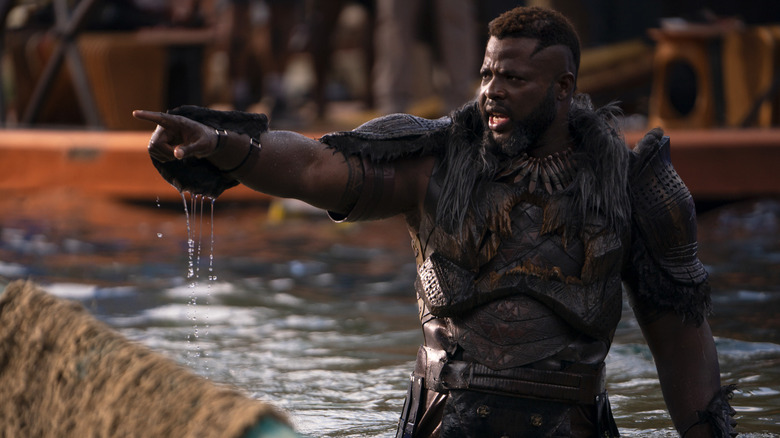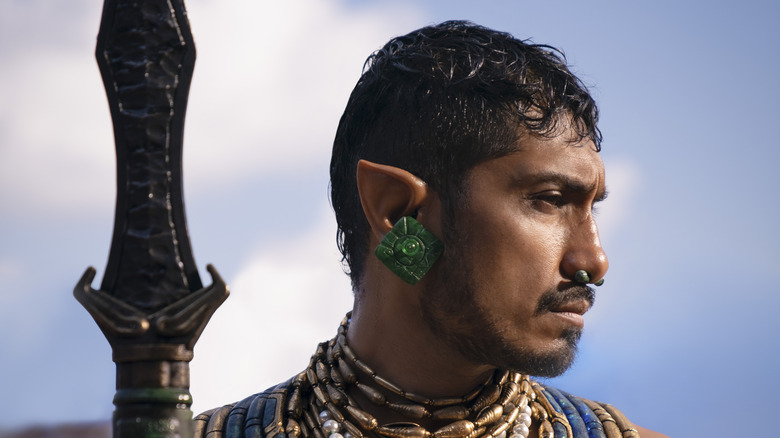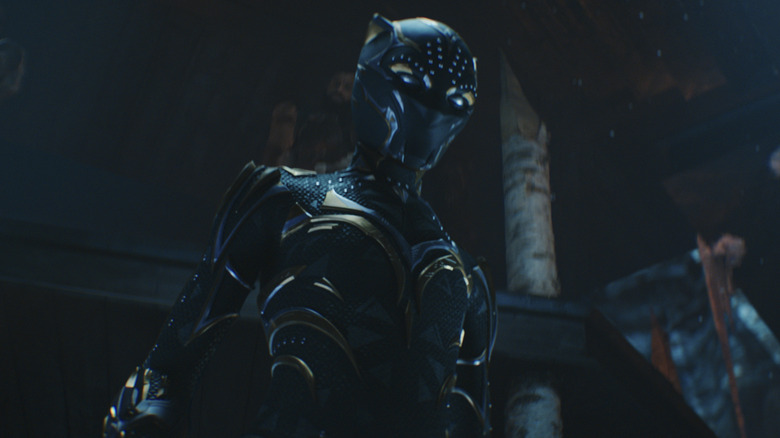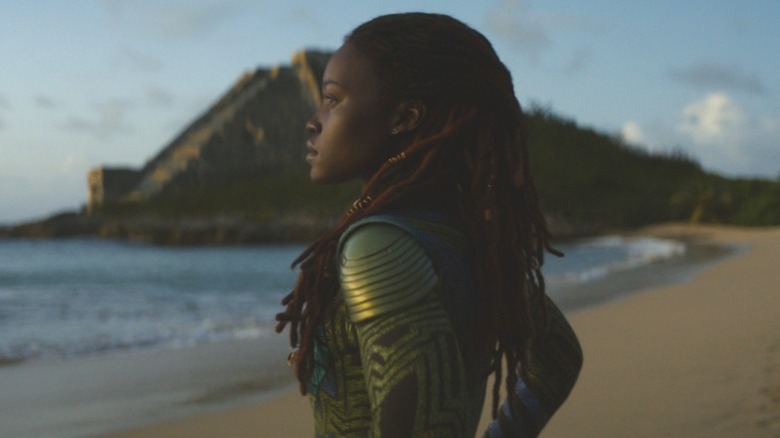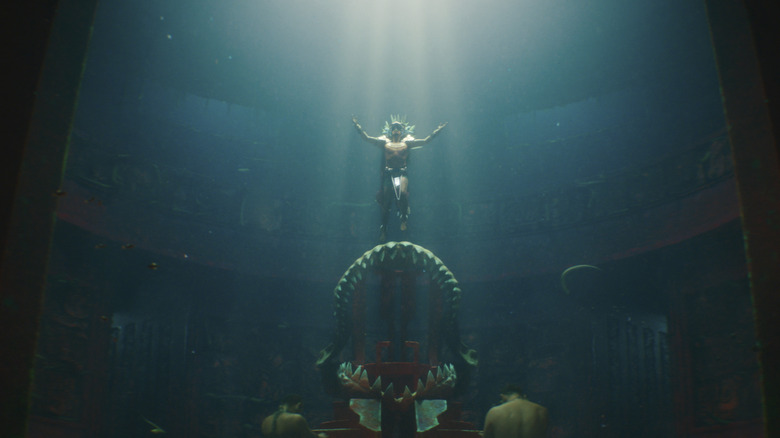Black Panther: Wakanda Forever's Ludwig Göransson On Blending The Soundtrack And The Score [Exclusive Interview]
Composer Ludwig Göransson has worked with "Black Panther: Wakanda Forever" writer-director Ryan Coogler for over a decade. Göransson's work on the first "Black Panther" film earned him an Oscar and a Grammy, and if you've watched "The Mandalorian," you've heard his work as well. Coogler also credits Göransson with getting Rihanna on board for the song "Lift Me Up," which he co-wrote and produced.
I had the chance to talk with Göransson about his work on "Wakanda Forever," where he worked across multiple continents to create the score, including the music that goes with the introduction of Namor and the underwater city of Talokan. Read on for our spoiler-free discussion.
'It was so inspiring to hear all these sounds that I never heard before'
This interview has been lightly edited for clarity and brevity.
In "Wakanda Forever," we're introduced to Talokan, the place where Namor's people live. I know you've mentioned before about how you worked with Mayan archeologists to work on the theme for Namor and Talokan. I would love to hear more about that — the specifics of what you found through your research.
It was so interesting, because I didn't know that much about that culture and that music, and obviously, we all know that it was erased, that it was forcibly erased hundreds of years ago. That's why I was like, "Okay, well, we have to go to Mexico to try to see how we can most possibly come to reimagine that sound." So I went to Mexico and connected with these incredible music archeologists that are experts in this area — they've been working their whole life trying to reimagine what the sound would be. They've been finding some of the instruments in some graves. Being able to look at those instruments, the flutes — they can see on the holes of the flutes which holes were used the most, and you can imagine, "Okay, well, these intervals were probably played a lot."
A lot of the instruments are from nature. So it's like, seashells, there's turtle shells that you hit with sticks, there's different kind of clay flutes that make the sounds of birds, shakers that sound like snakes. It was so inspiring to hear all these sounds that I never heard before and definitely never heard in a movie before.
Namor's sound was a seashell. His theme is played on a seashell, which also tied into the script, because there's a couple scenes in the movie where he is actually playing the seashell. So that was tied into the movie in early ways.
Another instrument that was very much portraying him was also a whistle called a death whistle. It's a clay flute that you play and you're basically opening it up with your hand and it sounds like a crazy, otherworldly scream — almost like an animal scream or something. That comes every time Namor is doing some crazy action or shows his strength, you hear this very abrasive sound. There's also a lot of vocals for the Talokans. They have their sonar attack. They have also these low male, almost like throat singing type vocals.
'It was important to me that we do it in the right way, where you also show that there's a different person behind the mask'
For Namor's seashell, did you try different seashells? I'm curious how you found the right seashell.
Oh, yeah. We spent a couple of days on seashells, because there's so many different sizes. There's a large, medium, small, and tiny, and it's a very difficult instrument to play. The tone can sometimes be similar to a French horn, but you don't have the same range in tonality and intervals. You're very limited in your notes and how you could access the notes fast, because you're basically changing the notes by just putting your hand in the seashell. So it was kind of a combination between two different seashells because we had to experiment a little bit to get the exact melody that I wanted. And sometimes when you see Namor by himself, in a more intimate setting, it's just a solo seashell melody. But then, when you see him with all his people, ready to go to war, it's the seashell accompanied by eight French horns. So it gets an extra power to it.
We know from the trailer there's going to be a new Black Panther. I wondered if you changed the Black Panther theme at all to fit the new Panther. And if so, how you approached that and how you potentially changed it or augmented it?
The Black Panther theme does come into the movie at the right moment. There's the golden moment when you have that part in the movie where they show the new Panther. We've seen it in the trailer. So there is that time when you have the possibility to put the theme in. But it was important to me that we do it in the right way, where you also show that there's a different person behind the mask.
And did you alter the theme at all to do that? What specifically did you do to reflect that?
So I did that through the theme. There's the same Black Panther theme, but it's now immersed with the theme of another character. They work hand in hand. When you hear it all together, it sounds fulfilled completely.
'Every note, every word, every lyric, everything was written specifically for the movie'
One thing I noticed about the movie is that it's almost seamless when it moves from songs to the score and vice versa. How did you approach making it so holistic?
In my career, I've been working a lot with artists, producing songs and writing songs for artists, and then also, in my other job, doing scores for films. And this was truly one of the first times where I really got to combine them all into one immersive experience. Normally, it's two different departments doing two different jobs, but here, I worked with the artists and I worked with the instrumentalists for the score in a seamless process. So when I was recording the Mayan instruments and the Mayan sounds in Mexico during the daytime, at nighttime, I was recording with contemporary artists — rappers, singers, indigenous musicians, indigenous singers. And I was using elements that I'd been recording for the score in the songs.
This was during when Ryan [Coogler] was shooting the movie, so we didn't have any footage, but we did have the script. So I was in with the artists, we were reading the script together, and I showed them, "This could be a great scene to write a song for." Every note, every word, every lyric, everything was written specifically for the movie. And I'm using elements from the song in the score, and I'm using elements from the score into the songs. Everything's connected in one tissue.
'It was kind of an out-of-body experience'
You mentioned that you called out places that would be good for a song. No spoilers, but what specific criteria did you use to decide whether it should be a song versus a score?
That's a great question. I think when I read a script, there were moments to me that stood out in the way that Ryan writes. His writing is so immersive and so beautiful. He's such a great storyteller. And sometimes I connect with it through hearing music. It was kind of an out-of-body experience a little bit, because we were working on this before they finished shooting the movie, so I had all this material with me, back from Mexico and Lagos, back to L.A. When I finally started getting pictures and started getting video, I just started to fill in the cut with the music that we recorded. And a lot of times, it was like, "Oh my God, it works perfectly." It was like magic.
"Black Panther: Wakanda Forever" premieres in theaters on November 11, 2022.
